The transfer functions editor¶
The transfer functions editor eases off the specification of transfer functions. The main features of this editor are described below.
Let us briefly recall what transfer functions are: Python scripts, that transform robot sensor data into spike input for the brain and brain spike output into commands for the robot actuators. Actually, transfer functions are what you will most likely want to edit.
The editor displays these scripts and enables the user to change them. Users should have knowledge of the expected syntax and of the brain spike and robot interfaces.
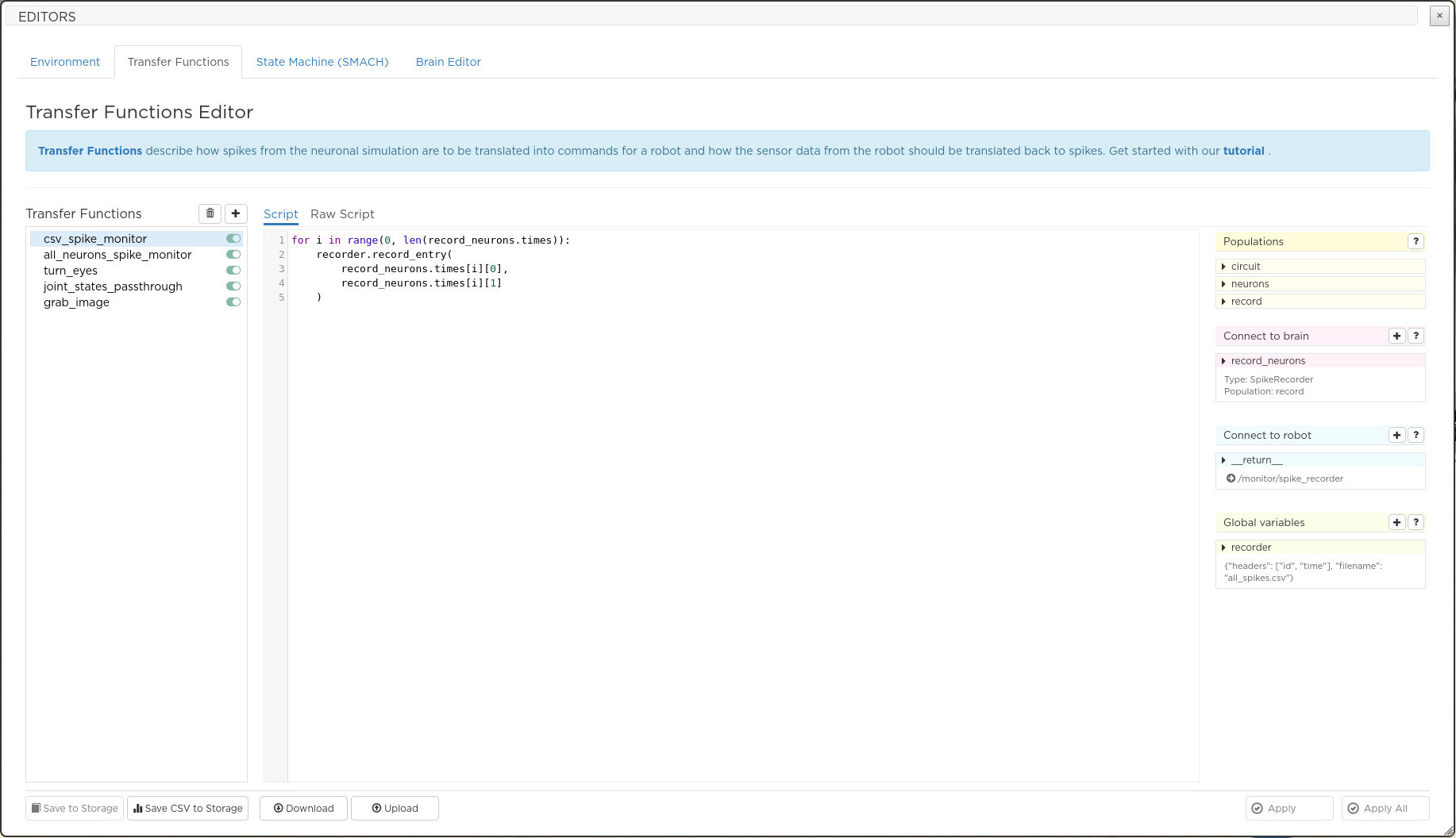
In the introduction text of the pane, a link takes the user to the relevant documentation.
Clicking on Apply submits the changes in a transfer function to the current simulation. The user should see the effect on the robot’s behavior immediately.
Clicking on Delete removes this transfer function from the simulation.
Clicking on New at the top of the editor creates a new transfer function template that you can edit.
The Download and Upload buttons enable saving or loading of a local set of transfer functions. It can be useful to switch between multiple versions.
Save permanently saves the functions to the experiment
When a transfer function is newly created or transfer functions are uploaded, they are automatically checked for syntax errors and applied. Furthermore, there are several restrictions for Python code that is to be uploaded to the Platform for safety reasons. Mainly, this affects the
importstatement that is limited to a selected list of modules and statements with leading double underscores. If the module that you wish to import is failing to load, please contact us for inclusion (see Contact & Support).Warning
Currently, the NRP does not perform a semantic validation of modified and/or uploaded transfer functions. That means that if the transfer function tries to address neurons that are not present in the currently selected brain model, this semantic error cannot be processed and will cause the simulation to stop. Note that the same accounts also for modifications to the brain model.
Warning
Monitoring is implemented with a special transfer function called “all_neurons_spike_monitor” in our template experiments. If you delete or alter this transfer function, monitoring might not work properly.
Overview¶
The transfer functions editor splits into three main views. The view on the left allows you to select transfer functions while the view in the middle allows you to edit transfer functions body. If the Script tab is active, the NRP python decorators are hidden and a third view is displayed. This third view shows the list of neuron populations and three other widgets that help you create devices, monitors, ROS publishers and subscribers.
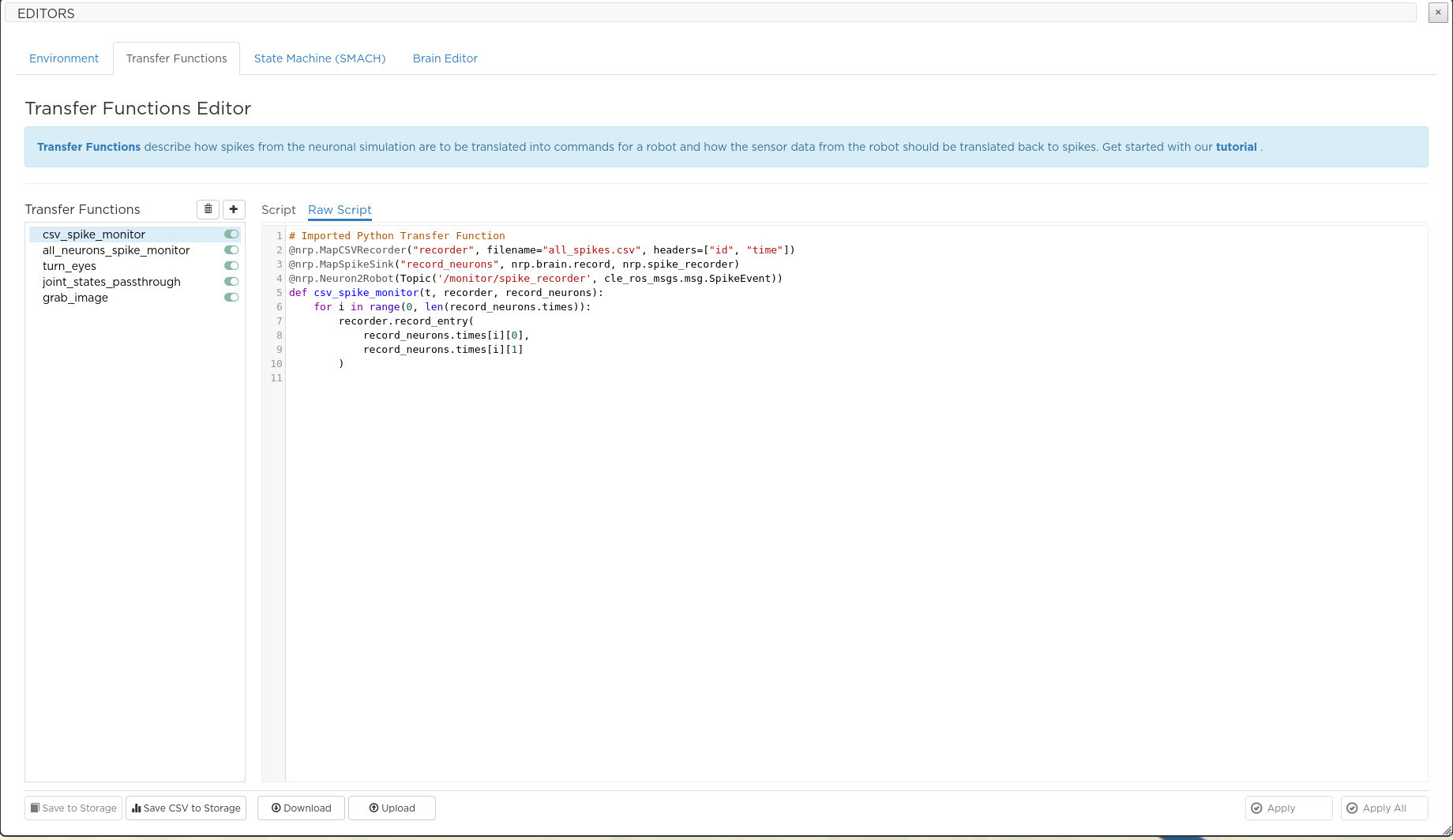
If the Raw Script tab is active, the NRP python decorators are displayed and you have full control of the python code.
Transfer functions selection¶

The view on the left is used to select the transfer function to be inspected or modified. It also includes buttons to delete the selected transfer function or create a new one. Moreover, each selected transfer function can be enabled or disabled. A disabled transfer function will not be executed until it is re-enabled.
The Script and Raw Script tabs¶

The Script tab displays the user-written python. The Raw Script tab displays, in addition, the definition name of the function and the python decorators which can be generated by means of the graphical interface. The definition name of the transfer function is the name used in the left view to refer to it. Changes become effective in the simulation only after the Apply button is pressed. Apply all will apply the changes of every transfer function. Pressing Save to storage will save your changes persistently in your storage space.
Populations¶
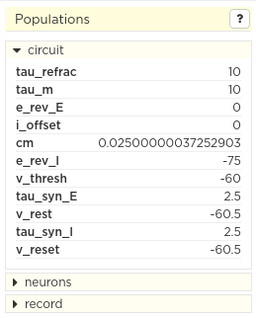
The Populations widget on the right displays a read-only information about user-defined neuron populations of the brain model. Populations are listed and each population item can be expanded so as to unveil the features of its neurons: you can read for instance the value of the resting potential or the refractory period. This information can be useful when designing transfer functions.
Connect to brain¶
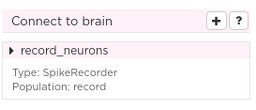
The Connect to brain widget displays the list of brain devices and brain monitors.
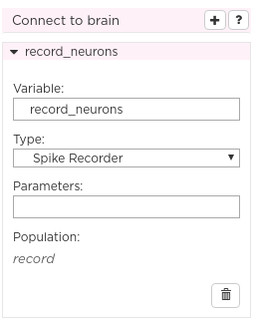
Each device or monitor can be expanded to display its configuration. The configuration can be modified from the graphical interface.
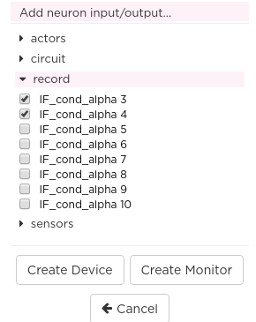
Pressing the + button of the Connect to brain widget displays the list of neuron populations with a tick box for each neuron. This way you can select a subset of a population to instantiate a device (brain input) or a monitor (brain output).
Connect to robot¶

The Connect to robot widget displays the list of ROS publishers and subscribers created by the selected transfer function.
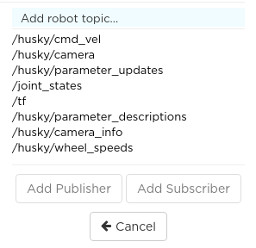
Pressing the + button of the Connect to robot widget displays the list of all the available ROS topics that can be used to communicate with the robot. Clicking on a robot topic selects this topic and then, a new topic channel can be created in the selected transfer function by clicking on Add Publisher or Add Subscriber
Global variables¶
Global variables allow you to share information accross transfer functions.
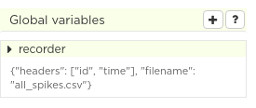
The Global variables widget displays the list of user defined global variables.
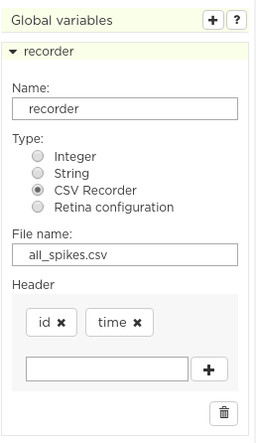
Each global variable can be expanded so that is value can be edited. Pressing the + button will create a new variable that you can edit by expanding its item.
The type of the variable currently can be one of the following:
Integer
String
CSV Recorder
Retina configuration
Based on the type of variable, different configuration options apply. For a CSV recorder, the user is asked to specify file name and headers. For a retina configuration, the configuration file is requested. For integer or string variables, the initial value is required.